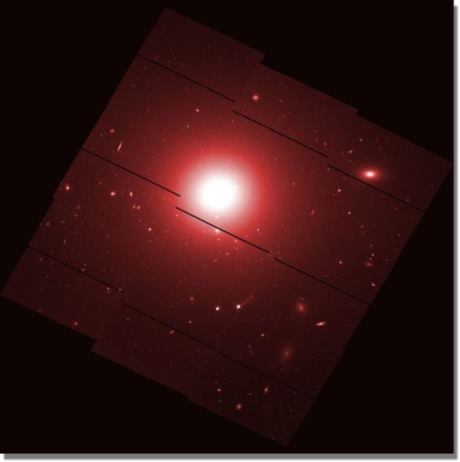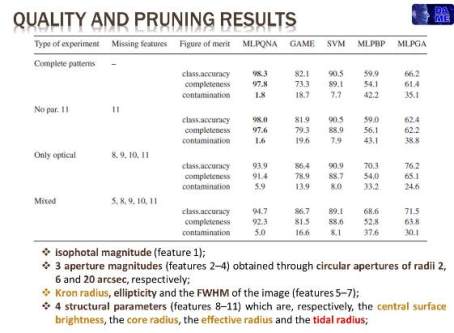Data Mining & Exploration
We make science discovery happen
Globular Cluster Classification

This page is the entry point to the GCS science case specialized for data mining on on the application of a Neural Network technique (Multi Layer Perceptron trained by the Quasi-Newton learning rule) to show that it is possible to effectively identify Globular Clusters in external galaxies, using single-band photometry and marginally resolved images. The experiments are performed through the DAME Web Application Suite DAMEWARE.
Related published article Brescia et al. 2012.
Scope
The study of Globular Clusters populations in external galaxies requires the use of wide-field, multi-band photometry. However to minimize contamination problems and to measure some of the GC properties, such as sizes and structural parameters (core radius, concentration, binary formation rates) high-resolution data are required as well, which are only available through the use of space facilities (i.e. HST).
The use of HST data is however challenging since the optimal dataset should be deep, multi-band and with wide-field coverage in order to minimize projection effects, as well as to study the overall properties of the GC populations, which often differ from those inferred from observations of the central region of a galaxy.
The use of single-band HST data reduces the cost (in terms of observing time) of such studies, and can be eventually integrated with ground-based photometry in other bands to obtain the required color informations.
In this project we intend to show that even the use of single band photometry can yield very complete datasets with low contamination, through the use of Neural Network (Multi Layer Perceptron trained by a Quasi Newton rule) algorithm. This approach will minimize the observing time requirements, thus allowing to extend such studies to large areas and to the outskirts of nearby galaxies, thus minimizing the observational biases in studies where a very complete dataset is required, such as the study of Low Mass X-ray Binaries in GCs.
The data
The dataset used in this experiment consists in wide field HST observations of the giant elliptical NGC1399 in the Fornax cluster. This galaxy represents an ideal test case since, due to it's distance (20 Mpc), it is possible to cover a large fraction of its GC system (out to >5 Re) with a limited number of observations. Furthermore at this distance GC are only marginally resolved even by HST, allowing to verify our experiment in a worst-case scenario.

The optical data were taken with the HST Advanced Camera for Surveys (ACS, program GO-10129), in the F606W filter, with integration time of 2108 seconds for each field. The observations were arranged in a 3x3 ACS mosaic, and combined into a single image using the MultiDrizzle routine (Koekemoer et al. 2002). The final scale of the images is 0.03”/pix, providing Nyquist sampling of the ACS PSF. The field of view of the ACS mosaic covers ~100 square arcmin and extends out to a projected galactocentric distance of ~55 kpc, i.e. 4.9 r_e of the GC system (~5.7 r_e^gal).
Results
The machine learning supervised model which obtained the best recognition performances was the Multi Layer Perceptron (MLP) trained by the Quasi Newton Approximation (QNA) learning rule.

